What does Orthodox Serbian Christmas look like? Roasted piglet, oak branch, and Cesnica
20. 10. 2023
What will you learn in this article?
Unlike in many Western countries, Christmas in Serbia is celebrated in January and not in December.
The celebration involves a roasted piglet, oak branch, and garlic, significant holiday symbols.
Children look out for Santa Claus during this time, and the postman also plays an important role in the festivities.
Additionally, Christmas Eve dinner in Serbia is known to have fewer dishes than usual, which may seem “poor” to some.
Read on to discover more about the unique and fascinating ways Christmas is celebrated in Serbia.
When is Christmas celebrated in Serbia?
In Serbia, the main church is the Orthodox Church, which still uses the old Julian calendar, which means that Christmas Day is January 6 and Christmas Day is January 7. Advent in the Orthodox Church begins on November 28 and lasts six weeks.
On Christmas Day, called Badnji dan during the day and Badnji in the evening after sunset, families gather and have dinner together. It is the last day of the Christmas fast, so meat and other animal products are not eaten.
Many old Serbian traditions associated with the countryside have lost their relevance today as more and more people live in cities. For example, the family’s father used to go to the forest on the morning of January 6 to cut an oak branch called a “chastova grana.” Later, it became a “badnjak,” or tree, symbolizing the Serbian Orthodox Christmas. Christmas is called Božić in Serbian.
Do you know Serbian Christmas traditions?
The first person to enter the house on January 7th is called “pojajnik” and is supposed to bring good luck to the house and the family. The position holder is often pre-arranged. However, if the family does not have a good year, they will not invite the same person again.
When it comes to Christmas trees or branches, the most popular species is oak. In eastern Serbia, beeches, pears, hornbeams, and plum trees are used less often than oaks. Traditionally, it was decorated with straw and ornamental twigs and placed in the fire.
The pojajnik put it into the fire and poked it through the burning fire so that sparks flew, wishing that the happiness and prosperity of the given family would be as abundant as the sparks.
Since most Serbs today live in cities, badnjak is often symbolically represented by a cluster of oak twigs with brown leaves attached, which are used to decorate a house on Christmas Day.
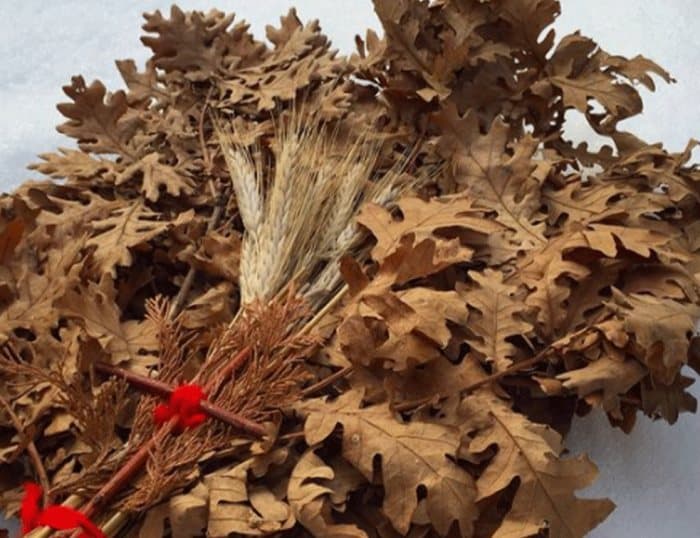
Who brings the children’s presents?
In the past, Christmas in Serbia was completely gift-free. But now, Serbian children are not deprived of a Christmas present; Santa Claus brings them presents, similarly to other Orthodox countries. The giveaway takes place on January 6.
In addition, on December 6, Serbian children receive sweets from Nicholas, who is called Sveti Nikolaj here.
Who are Romanian children eagerly waiting for? Find out how Christmas is celebrated in Romania.
Similar articles
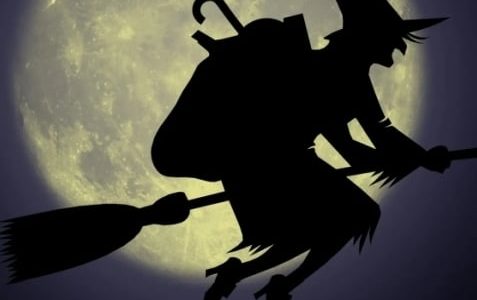
How do Italians celebrate Christmas and what are their customs?
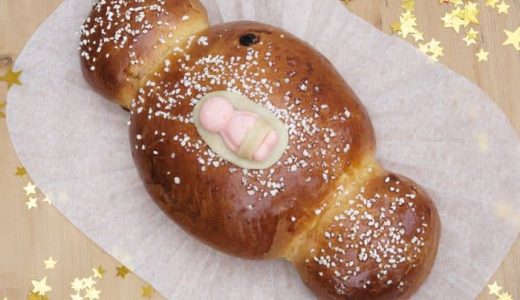
Do you know how Christmas is celebrated in Belgium? Learn about Belgian Christmas traditions in our article

How is the traditional French Christmas celebrated? Who is Père Noël and what is Réveillon?
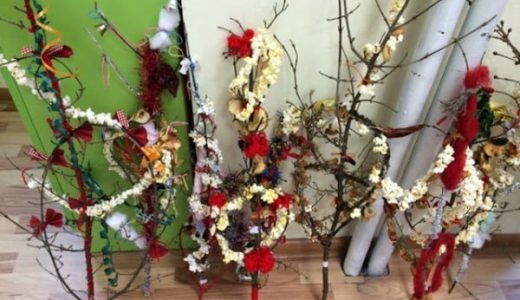
Learn about Bulgarian Christmas customs and bake delicious baklava!
What is eaten in Serbia at Christmas?
Since Badnji evening is still part of the fast, fasting food is eaten, i.e., mainly fish and beans, without milk and cheese. In the countryside, the roasting of a piglet is often started, which is eaten for lunch on January 7 because the fast has been skipped. Traditionally, it is said that the right front leg of the piglet was hidden until January 15, the Serbian New Year.
Cheese is traditionally the first course on Christmas Eve. After that, a roasted pig is served, which is called pečenica. Sarma, or cabbage leaves stuffed with rice, minced meat, and lots of sweets, is also popular.
A special kind of bread is also baked at Christmas. It is called Cesnica, and it is round. Various rules and rituals accompany its preparation. A coin is often inserted into the dough, and other small objects can be inserted into it.
The Cesnica is rotated three times counter-clockwise during the Christmas lunch and distributed among the family members. Whoever finds a coin in their piece of bread is said to have extraordinary luck in the coming year.
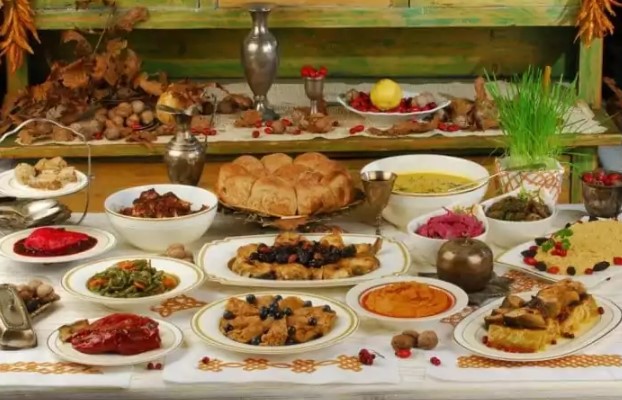
How to prepare your own Cesnica?
Cesnica is usually prepared in the morning of January 7. It got its name from an old Serbian word that meant part because breaking Cesnice is part of the Christmas ritual. Cesnica is never cut with a knife, but the head of the house breaks it by hand and gives a piece to each member.
Ingredients:
- 35 oz all-purpose flour
- 3 cups of milk
- 1 cube of yeast
- 2 eggs
- pinch of salt
- coin
Method:
- Dissolve the yeast in a little lukewarm milk.
- Beat one egg and add it to the yeast.
- Add salt and stir.
- Gradually add the flour and pour the remaining lukewarm milk until you get a dough.
- When the dough is stiff enough, start kneading it.
- Cover the well-kneaded dough with a clean cotton towel and let it rise.
- Shape the risen dough into a ball and insert a coin into it.
- Place the cesnica in a greased baking dish and create several patterns on the top. Traditionally, a sprig of “badnjak” was used for decoration.
- Brush the surface of the cesnica with egg.
- Bake for 10 minutes in an oven preheated to 392°F, then reduce the temperature to 338°F and bake until golden.

What places to visit in Serbia at Christmas?
Would you like to spend this year’s holidays unconventionally? Christmas in Serbia will allow you to do this; there is no shortage of exciting experiences here. In addition to famous spa resorts, you can also go to historic towns.
- Belgrade—the capital, Belgrade, has many faces. Modern art meets Ottoman monuments. Traditional Advent attractions include several famous Christmas markets.
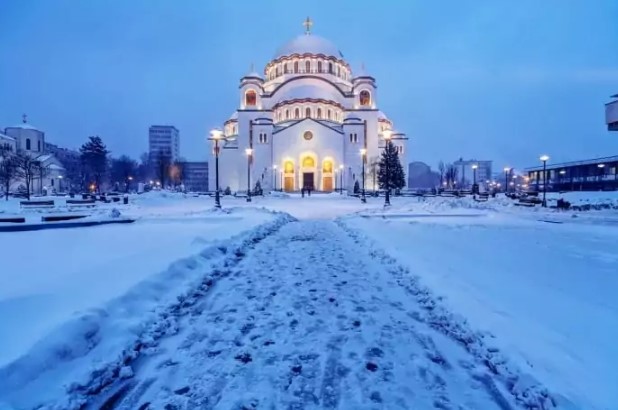
- Novi Sad, Serbia’s second-largest city, is located in the northern part of the country and combines history and modernity. During Advent, its streets and squares are lit with many lights, and concerts, art exhibitions, and Christmas markets are held here. The city park, which includes the former blind arm of the Danube, is transformed into a giant ice rink every year for all skating lovers.

